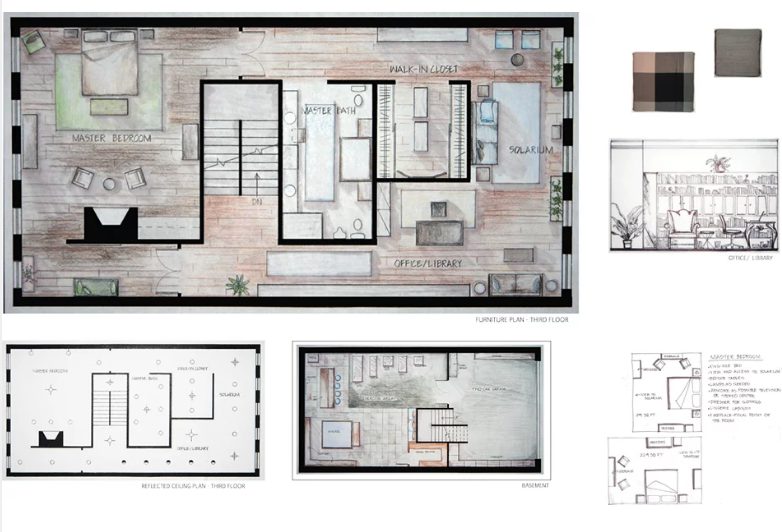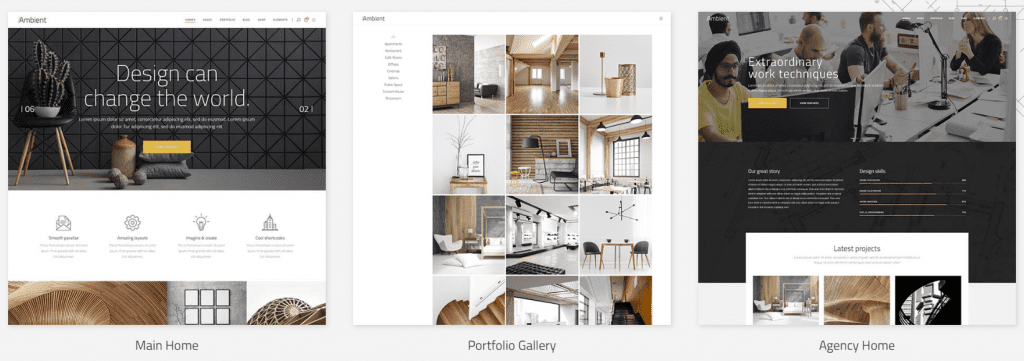Putting together your interior design portfolio is the first step towards getting your first job or freelance project as a professional interior designer. No one will hire you without one. It’s your chance to showcase your best work, to show your strengths and impress people with your skills. But what do you include? How should an interior design portfolio be presented? What are employers really looking for in your portfolio? Who better to ask than Lucy Painter. Lucy looks at dozens of new interior design portfolios each week. She knows exactly what her clients are looking for when they are hiring new talent so read on for the inside track….
What do employers look for in a portfolio?
When Lucy Painter asked a range of clients what they really look for in an interior designer’s portfolio, the answers were varied. Some expected beautiful presentation skills, another wanted to see the story of the project develop, another wanted to see that a candidate had demonstrated their understanding of colour and materials. A client who designed exhibition spaces and gallery shows wanted someone who demonstrated a clear passion for the sector.
So where does this leave you when you’re just starting out and don’t have a lot of experience or real world projects to share?
The rules are the same for portfolios as for CVs – you need to tailor your interior design portfolio to the job or client you’re applying to. If this means that you create a small project or some sketches and quick visuals specifically for the jobs or projects you really want, it’s well worth the time and energy!

The 5 Second Rule
Whenever you’re trying to make a lasting first impression, remember the 5 second rule. Your interior design portfolio should grab someone’s attention immediately. Whether it’s a strong cover image or clear and uncluttered layout, remember that first impressions last.
The same goes for an interview; many employers will make up their mind before you even have chance to speak so stand up straight, dress appropriately and smile with confidence!
An example of work from NDA tutor, Martin Nealon’s You Tube Portfolio.
Show Your Strengths
If you’ve only just finished your interior design course, chances are you won’t have lots of real-world projects to share in your portfolio. The NDA’s interior design qualifications are taught around the entire design process which means that you leave having completed projects to a set brief. This will give you a well-rounded portfolio, even if you haven’t done any actual paid work. It’ll include design development, technical drawing and renders.
The most successful NDA students start pitching for work before they even complete their degree or diploma. Completing projects for friends and family or offering your services for free or small fees in your local area can be a great way to pad out your interior design portfolio.
Your portfolio should clearly demonstrate your key skills but for junior designer roles and entry level positions you will also want to show that you have an understanding of the entire design process. Your portfolio should include examples of your technical ability as well as your thought processes so even if sketching isn’t your strongest skill, make sure you include at least one example.
If you have a specific area of expertise, you can always add an additional pdf or section to your portfolio to show this. This includes digital skills. So, if you’re a whizz on SketchUp make sure you include a link to your You Tube channel with walkthroughs or a pdf of static renders.
Size Matters
You’ll ideally need both an online portfolio and a downloadable version to allow employers to view your work offline. Some are still old-school and will want to print your portfolio out. This can throw up issues with file sizes. We Transfer can be used for sending larger files but also consider hosting your portfolio on a cloud-based storage solution such as Google Drive, Dropbox or OneDrive, even if it means paying for additional storage.

Making an Impact
Aside from your amazing work, there are other ways to stand out from the crowd. Lucy suggests posting your portfolio as it’s an unusual way of putting your work forward and also means that an employer will look at it straight away. You can also create a video presentation where you talk through your work. This could be as a screen recording and voice over or animated presentation.
Presenting Your Portfolio
If you’re lucky enough to be called for interview, you’ll need to be prepared to talk through your portfolio. Don’t try and wing it! You may think you know your projects inside and out but prepare a proper presentation in advance.
Whether you have been called for an in-person interview or online meeting, you’ll want to be fully prepared. Make sure your presentation lasts no more than 15-20 minutes. Introduce your work – what you enjoy, where you believe your strengths lie, what projects you enjoyed the most and why.
This is your chance to be memorable and you want that to be for good reasons, not bad! So – these may seem like simple or obvious things, but….
- Put your phone away. Don’t have it on your desk, don’t try and use it as a presentation tool and definitely put it on silent!
- Stand up – when you stand, the tension drops out of your body and you instantly appear more confident – watch the video below.
- Express yourself – let you personality shine!
- Don’t be afraid! Any interview is good practice. Even if you don’t get this job, it’s all great experience for the future.

